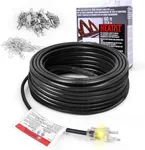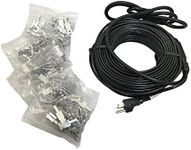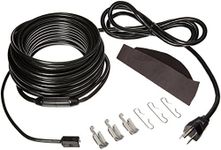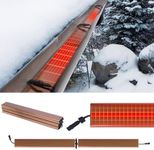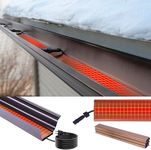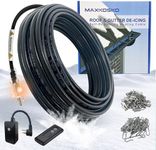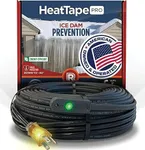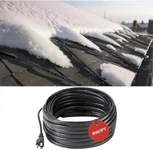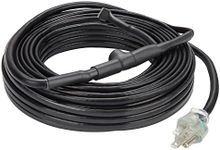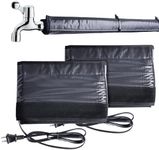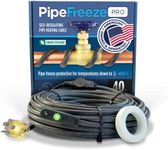Buying Guide for the Best Heat Cables For Roofs And Gutters
When it comes to picking heat cables for roofs and gutters, it's essential to understand the key specifications that will ensure you get the right product for your needs. Heat cables are designed to prevent ice dams and icicles from forming on your roof and in your gutters, which can cause significant damage to your home. By focusing on the following key specifications, you can make an informed decision and choose the best heat cable for your situation.Cable LengthCable length is the total length of the heat cable. This is important because you need to ensure that the cable is long enough to cover the areas of your roof and gutters that are prone to ice buildup. To determine the right length, measure the linear feet of your roof edges and gutters. If you have a larger area to cover, you will need a longer cable. For smaller areas, a shorter cable will suffice. Make sure to account for any additional length needed to reach an electrical outlet.
Cable TypeThere are two main types of heat cables: self-regulating and constant wattage. Self-regulating cables adjust their heat output based on the surrounding temperature, making them more energy-efficient and safer for various roof materials. Constant wattage cables provide a consistent heat output regardless of the temperature, which can be useful for areas with consistently cold temperatures. Choose self-regulating cables if you want energy efficiency and safety, or constant wattage cables if you need consistent heat in very cold climates.
Power OutputPower output, measured in watts per foot, indicates how much heat the cable generates. This is crucial because it determines how effective the cable will be at melting ice. Higher power output means more heat, which is better for extremely cold areas or thicker ice. Lower power output is suitable for milder climates or less severe ice problems. Assess the typical winter conditions in your area to decide on the appropriate power output for your heat cable.
VoltageVoltage refers to the electrical power required to operate the heat cable. Most residential heat cables operate on standard household voltage (120V), but some may require higher voltage (240V). Ensure that the voltage of the heat cable matches the voltage of your electrical system. If you are unsure, consult an electrician to determine the appropriate voltage for your home.
Durability and Weather ResistanceDurability and weather resistance are critical because heat cables are exposed to harsh winter conditions. Look for cables that are UV-resistant, waterproof, and designed to withstand extreme temperatures. This ensures that the cable will last longer and perform reliably throughout the winter. Check product reviews and manufacturer specifications to gauge the durability and weather resistance of the heat cable.
Installation EaseInstallation ease refers to how simple it is to install the heat cable on your roof and gutters. Some cables come with clips, spacers, and detailed instructions, making them easier to install. Others may require professional installation. If you prefer a DIY approach, look for cables with user-friendly installation features. If you are not comfortable with electrical work, consider hiring a professional to ensure safe and proper installation.
